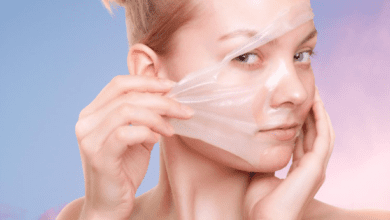How to Moisturize Your Face at Home: 10 Natural Remedies for Dry Skin

Because they don’t include all the extra chemicals that manufactured skin creams do, natural remedies are also better for your skin.
Despite the fact that our skin is the largest organ in the body, we occasionally neglect to take proper care of it. Winter weather, hot showers, and vigorous towel-scrubbing when we dry ourselves all contribute to dry skin.
Your kitchen might already have all the ingredients you need to rehydrate your skin, so you don’t need to go out and buy pricey lotions and potions. Because they don’t include all the extra chemicals that manufactured skin creams do, natural remedies are also better for your skin.
Here are 10 easy, natural cures for dry skin:
1. Cleaner with olive oil
According to licensed aesthetician and salon manager Brandy Crompton, olive oil functions as a natural cleanser and moisturizer. All you have to do, she says, is massage the oil into your skin and cover your face with a warm, damp cloth until it cools. Once you’ve removed any extra oil, you’re done. Olive oil preserves the natural oils on your skin, making it an excellent option for a skin cleanser.
2. Luxurious Avocado Mask
According to Crompton, avocado’s rich, creamy texture is effective at relieving dry skin. She recommends blending half an avocado with a teaspoon of olive oil after pureeing it. You can also add a tablespoon of honey if your skin is extremely dry. After applying the mask, let it sit for 15 to 20 minutes. After removing the mask, use your usual moisturizer for an additional moisture boost.
3. Sugar scrub and olive oil
This combination works well as a moisturizing exfoliating scrub. Blend together two tablespoons of olive oil and half a cup of sugar. To add a calming scent, you can also add an essential oil, like lavender.
After massaging the combined ingredients into your skin, rinse it off. Double up on the benefits of exfoliated skin by applying a moisturizer.
4. Soak in Oatmeal Bath
Incorporate a cup of oatmeal into a warm bath and relish the advantages of revitalized skin. The oat product helps your skin retain moisture from the water and has skin-soothing qualities.
5. DIY Honey Oatmeal Mask
According to Crompton, oatmeal works well as an exfoliator or mask. Combine two tablespoons of oats, one tablespoon honey, and a small amount of water. After warming the mixture slightly, apply it to your skin. You can use it as an exfoliator and immediately wash it off, or you can use it as a hydrating mask and leave it on for 15 to 20 minutes.
6. Oil from coconuts
Tsippora Shainhouse, MD, suggests using coconut oil as a moisturizing cream before going to bed in addition to its culinary uses. It is easily applied because it is solid at room temperature. Put on the oil and cover with thick socks or non-latex gloves if your hands and feet are chapped.
7. Fill Your Bath with Oil
Natural oils that are extracted from the skin by drying soaps can be used as a bath soak to protect and moisturize the skin’s natural skin barrier. Examples of these oils are avocado, coconut, argan, and olive.
A few tablespoons of oil should be added while the bath is running. Apply a tiny bit of oil to your skin after your bath if you don’t want to scrub the oil slick off the tub when you’re done.
8. Compressed Milk
According to Shainhouse, milk contains lactic acid, which functions as a gentle natural exfoliant and has inherent anti-inflammatory qualities. You should apply milk compresses to your skin for periods of five to ten minutes. Use with caution as lactic acid can sting cracked skin, even though it works wonders for irritated and itchy skin.
9. Fruit Enzyme Exfoliant or Cleanser
Fruit enzymes, according to Shainhouse, can significantly benefit your skin in the winter. On the face and body, the alpha-hydroxy acids exfoliate the outermost layer of dull, dead skin cells.
For radiant skin, apply a fruit-enzyme face mask made from papaya, pumpkin, or pineapple twice a week.
10. Vera Aloe
Aloe vera gel has uses beyond sunburn relief. It can benefit your skin in the winter by lessening dryness-related redness and irritation.
Before using aloe on a large area of skin, conduct a patch test because some people are susceptible to allergic contact dermatitis.




